Buddhist caves in India are more than just archaeological wonders—they are gateways to history, spirituality, and remarkable craftsmanship. Carved from solid rock, they once served as retreats and places of worship for monks. These caves feature detailed carvings, large stupas, and murals that depict scenes from Buddha’s life and teachings. Let’s explore some of India’s most remarkable Buddhist caves that continue to captivate visitors with their artistry and spiritual aura, drawing in visitors from around the world.
Top 10 Buddhist Caves In India
Explore India’s rich spiritual heritage through its stunning Buddhist caves, featuring ancient rock-cut architecture. Here are the top Buddhist caves in India:
1. Ajanta Caves, Maharashtra
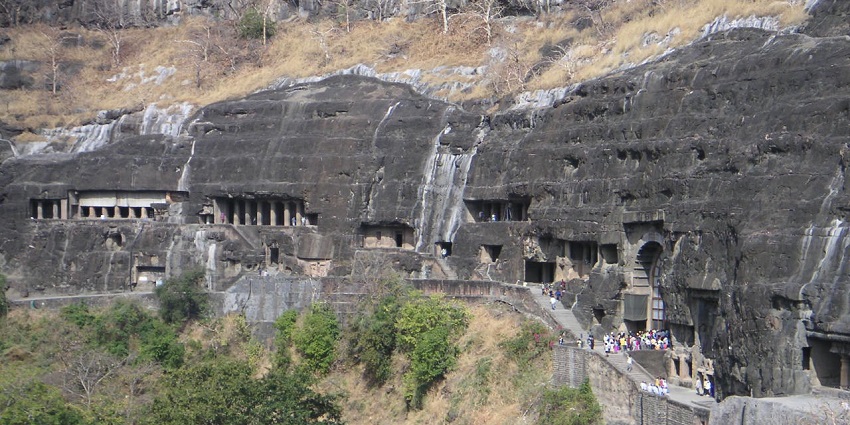
Photo: Soman / Wikimedia Commons
The Ajanta Caves are among the most famous buddhist caves in India. With over 30 rock-cut caves, they showcase detailed frescoes, intricate sculptures, and paintings that depict stories from the Jataka tales and the life of Buddha. Once used as monastic retreats and meditation halls, these caves offer a glimpse into early Buddhist traditions. Recognised as a UNESCO World Heritage Site, Ajanta remains important for those interested in history and art.
How To Reach: The nearest town Fardapur, about 5 km away. Buses and taxis operate frequently from Aurangabad, 100 km away
Nearest Airport: Aurangabad Airport, approximately 104 km away
Nearest Railway Station: Jalgaon Railway Station, around 60 km away
2. Ellora Caves, Maharashtra
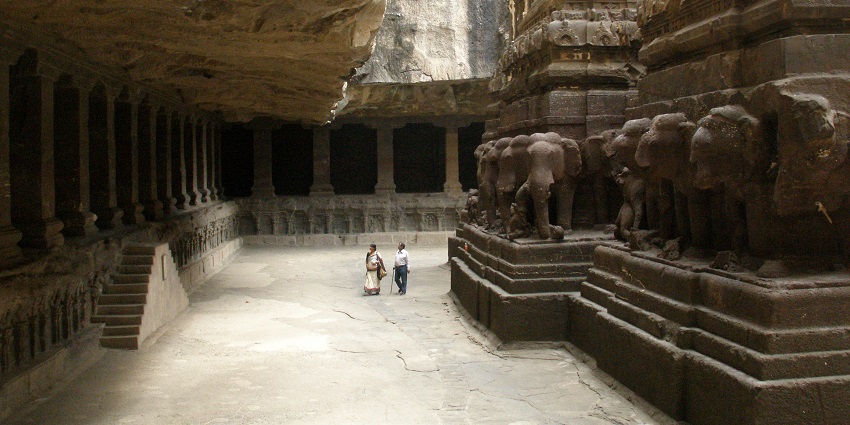
Photo: Vyacheslav Argenberg / Wikimedia Commons
The Ellora Caves consist of 34 rock-cut temples that reflect the coexistence of Buddhism, Hinduism, and Jainism. The Buddhist caves feature large prayer halls, intricately carved sculptures, and spaces once used by monks for meditation and study. Among them, the Vishvakarma Cave (Cave 10) stands out with its impressive chaitya hall and finely detailed entrance. These caves are an important example of India’s rock-cut architecture, showcasing the skill and craftsmanship of the artisans who created them.
How To Reach: The caves are accessible by road from Aurangabad, approximately 30 km away. Regular buses and taxis are available
Nearest Airport: Aurangabad Airport, approximately 30 km away
Nearest Railway Station: Aurangabad Railway Station, about 28 km away
3. Karla Caves, Maharashtra
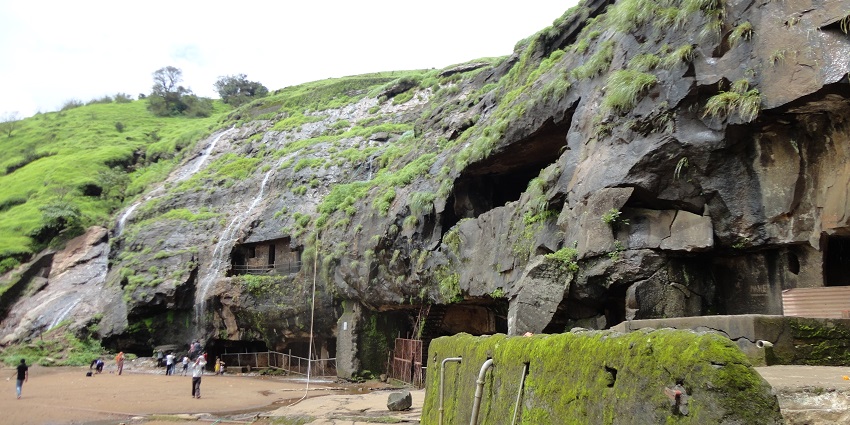
Photo: Kalpeshzala59 / Wikimedia Commons
Karla Caves are known for their impressive chaitya (prayer hall), which features an ancient wooden ribbed roof and intricately carved pillars. Home to one of the largest rock-cut Buddhist shrines in India, Karla caves provide a glimpse into early Buddhist communities which makes these caves one of the most historical buddhist caves in India. At the centre of the chaitya hall stands the main stupa, a focal point for worship, making Karla Caves an important historical site for both history and spirituality.
How To Reach: The caves are accessible by road from Lonavala, about 11 km away, with taxis and buses readily available
Nearest Airport: Pune Airport, approximately 60 km away
Nearest Railway Station: Lonavala Railway Station, around 10 km away
4. Bhaja Caves, Maharashtra
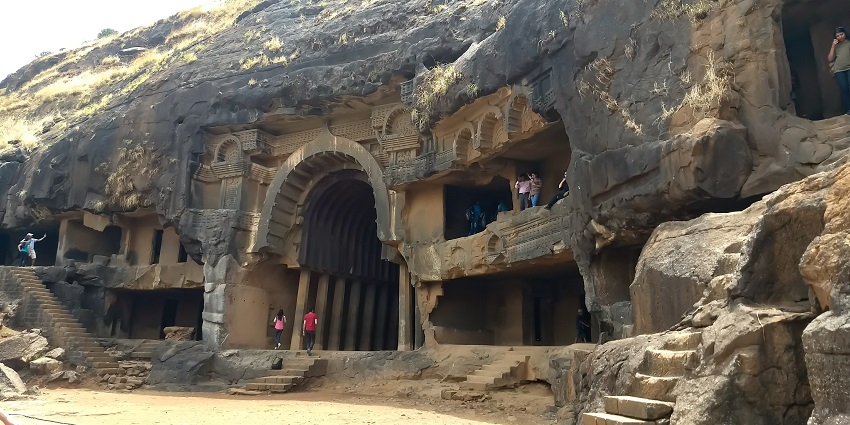
Photo: KSeraphin / Wikimedia Commons
Bhaja Caves include 22 rock-cut caves with stupas, prayer halls, and living quarters for monks. These caves stand out for their wooden architectural features, detailed carvings, and Buddhist inscriptions. The artwork depicts scenes from daily life, celestial figures, and traditional Buddhist symbols, reflecting the cultural and artistic influences of the time. The presence of vihara halls suggests that Bhaja functioned as a monastery, providing a place for Buddhist monks to live, study, and meditate.
How To Reach: The caves are accessible by road from Lonavala, around 12 km away. Taxis and buses frequently operate in the region
Nearest Airport: Pune Airport, approximately 63 km away
Nearest Railway Station: Lonavala Railway Station, about 11 km away
5. Kanheri Caves, Maharashtra
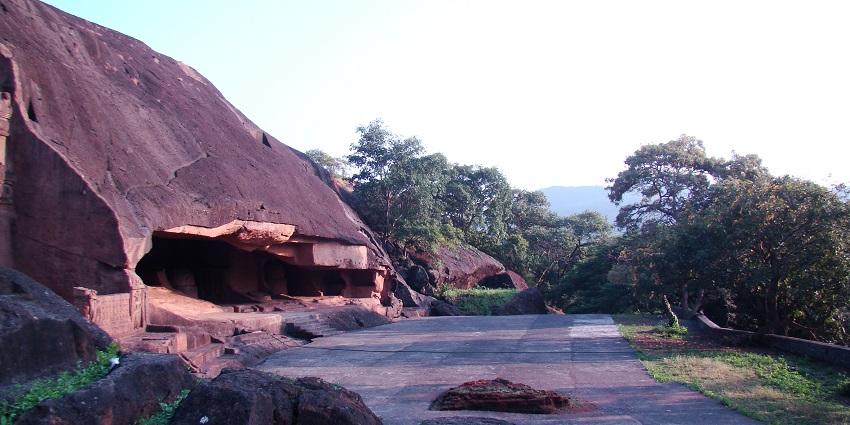
Photo: Varun Patil / Wikimedia Commons
Kanheri Caves, located within the Sanjay Gandhi National Park, comprise over 100 rock-cut caves used as monastic centres and are one of the most important Buddhist caves in India. These caves contain elaborate prayer halls, and the numerous inscriptions found here provide historians with insights into the spread of Buddhism in Western India. The site also features rock-cut stupas and large meditation halls, demonstrating the caves’ importance as a thriving Buddhist learning centre over several centuries.
How To Reach: The caves are accessible by road from Borivali, Mumbai, approximately 7 km away
Nearest Airport: Chhatrapati Shivaji Maharaj International Airport, Mumbai, approximately 30 km away
Nearest Railway Station: Borivali Railway Station, around 7 km away
6. Udayagiri And Khandagiri Caves, Odisha
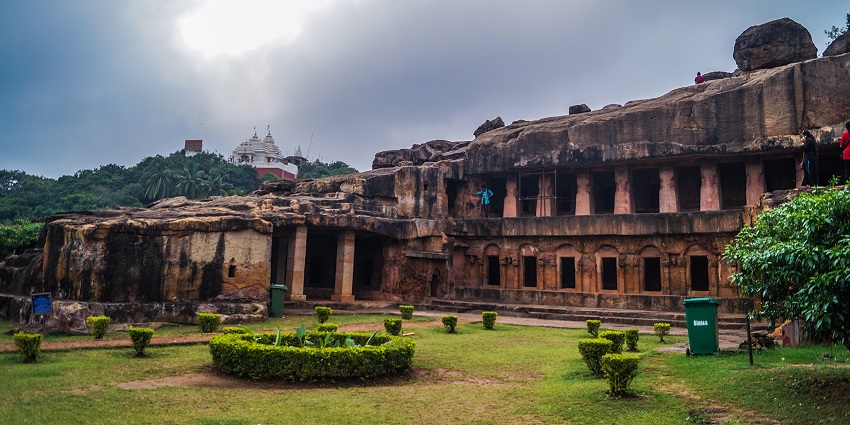
Photo: Government of Odisha / Wikimedia Commons
The Udayagiri and Khandagiri Caves, located near Bhubaneswar, are a collection of rock-cut caves which served as monastic dwellings for Jain and Buddhist monks. Udayagiri and Khandagiri caves are also known for their intricate carvings and detailed inscriptions. Many caves depict scenes of daily life, royal processions, and spiritual teachings. The Rani Gumpha (Queen’s Cave) is particularly famous for its elaborate sculptures and spacious chambers, making these caves an important historical and religious site.
How To Reach: The caves are accessible by road from Bhubaneswar, approximately 6 km away, with taxis and buses available
Nearest Airport: Biju Patnaik International Airport, approximately 7 km away
Nearest Railway Station: Bhubaneswar Railway Station, about 7 km away
7. Pandavleni Caves, Maharashtra
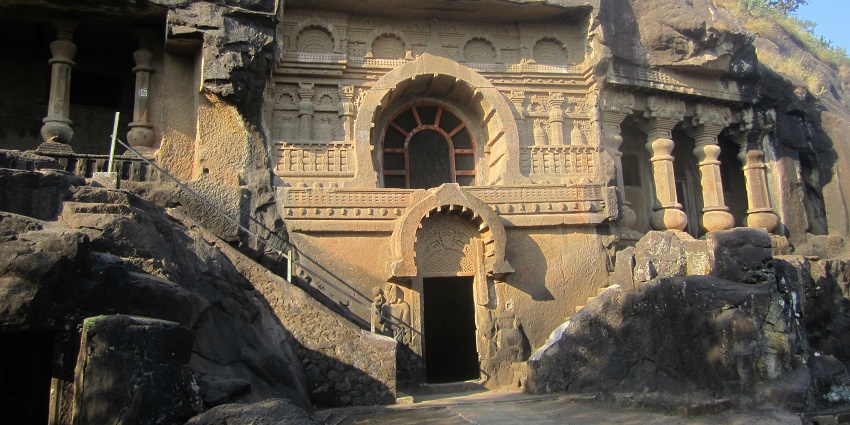
Photo: Katyare / Wikimedia Commons
Pandavleni Caves, or Nashik Caves, consist of 24 rock-cut caves used as monastic retreats. These caves contain intricately carved prayer halls, viharas, and stupas. The inscriptions in these caves provide valuable historical insights into Buddhist teachings and the rulers who supported Buddhism. Some caves feature beautiful sculptures of Buddha and Bodhisattvas, emphasising their religious importance and artistic excellence, making them the most popular buddhist caves in India.
How To Reach: The caves are accessible by road from Nashik, approximately 8 km away, with taxis and buses frequently available
Nearest Airport: Nashik Airport, approximately 25 km away
Nearest Railway Station: Nashik Road Railway Station, about 10 km away
8. Bedse Caves, Maharashtra
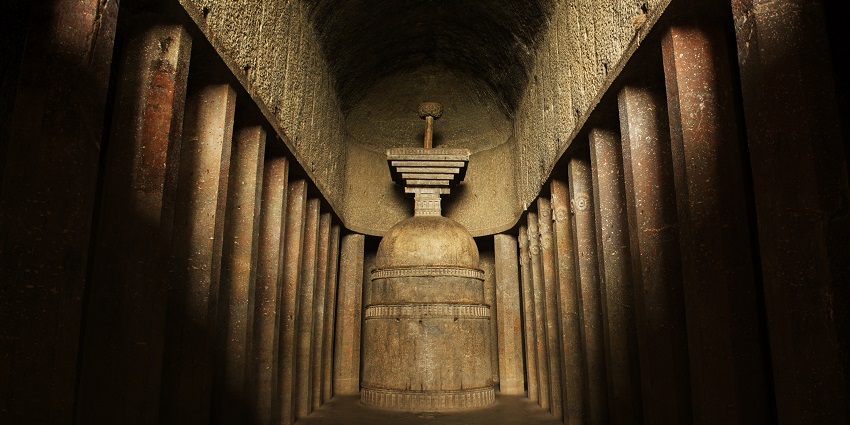
Photo: Soumitra Inamdar / Wikimedia Commons
Bedse Caves are among the lesser-known Buddhist rock-cut caves in Maharashtra. These caves feature detailed carvings of Buddhist deities, stupas, and prayer halls. The chaitya (prayer hall) and viharas here exhibit an early style of rock-cut architecture, with finely carved columns and reliefs depicting monks and devotees. Bedse caves remain an important site for those interested in Buddhist heritage and early Indian rock-cut architecture.
How To Reach: The caves are accessible by road from Pune, about 40 km away, with taxis and private vehicles being the best mode of transport
Nearest Airport: Pune Airport, approximately 45 km away
Nearest Railway Station: Lonavala Railway Station, around 12 km away
9. Dhauligiri Caves, Odisha
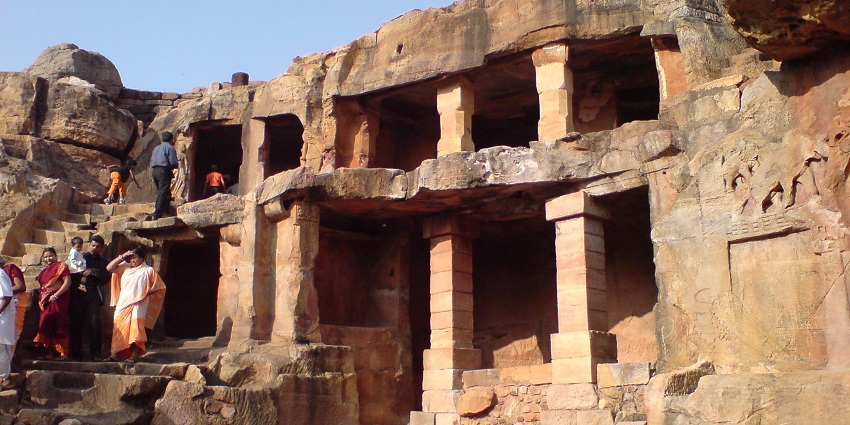
Photo: Neilsatyam / Wikimedia Commons
Dhauligiri Caves hold significant importance in Buddhism as they are associated with Emperor Ashoka’s transformation following the Kalinga War. The caves and the Dhauligiri Shanti Stupa are considered sacred Buddhist sites. Rock edicts found here document Ashoka’s efforts to promote peace and spread Buddhism. Monks seeking solitude and spiritual enlightenment used the meditation chambers carved into the hillside, making this site a major pilgrimage destination.
How To Reach: The caves are accessible by road from Bhubaneswar, approximately 8 km away, with taxis and local buses available
Nearest Airport: Biju Patnaik International Airport, approximately 10 km away
Nearest Railway Station: Bhubaneswar Railway Station, about 9 km away
10. Ghorawadi Caves, Maharashtra
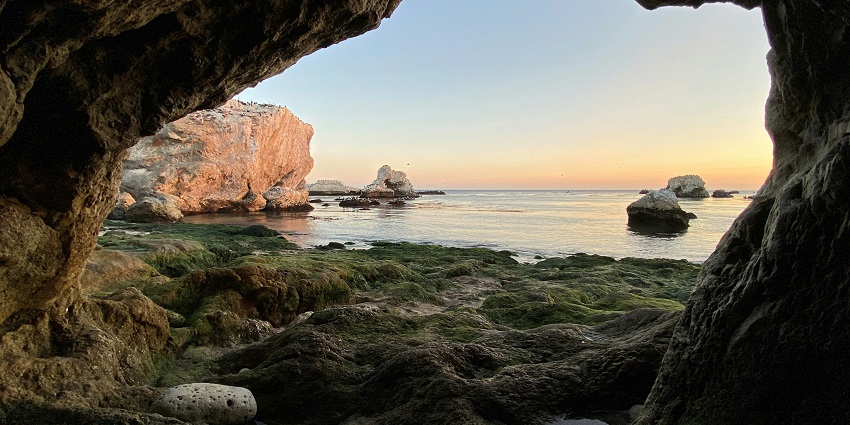
Photo: Philip Wahl / Unsplash / Image For Representation Only
Ghorawadi Caves, also known as Ghoradeshwar Caves, are a group of Buddhist rock-cut caves located near Pune. These caves feature carvings of Buddhist deities, prayer halls, and meditation chambers. Various stupas and rock-cut sculptures suggest that this site was once a significant centre for Buddhist practises. Today, the caves continue to attract visitors interested in history, archaeology, and spirituality and are the most famous buddhist caves in India.
How To Reach: The caves are accessible by road from Pune, approximately 25 km away, with taxis and private vehicles being the most convenient mode of travel
Nearest Airport: Pune Airport, approximately 30 km away
Nearest Railway Station: Talegaon Railway Station, around 10 km away
Buddhist caves in India reflect the country’s long and rich association with Buddhism. These rock-cut structures offer a glimpse into ancient monastic life, artistic traditions, and spiritual practices of the Buddhist era in India. Plan your trip with TripXL to these caves and understand Buddhism’s influence on India’s past and present.
Cover Photo: Setu Chhaya / Unspalsh


 WhatsApp
WhatsApp
 Twitter
Twitter









